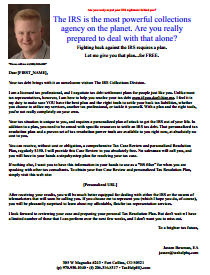Many taxpayers find themselves unable to pay their full tax balances when they file their income tax returns. Some common reasons that people might have for being unable to pay their taxes to the IRS include increased investment returns, more self-employment income, bonuses, and salary increases. When a taxpayer is unable to immediately pay his or her tax debt, making payment arrangements will likely be necessary.
The most common type of payment arrangement taxpayers can make to take care of their tax balances is an installment agreement. With this type of arrangement, taxpayers will make monthly payments to the IRS. In most cases, the payments are made by payroll deductions or direct debits. The set-up fee for a direct debit agreement made online is $31. If the direct debit installment agreement is created over the phone, in-person, or by mail, the set-up fee is $107. Fees can be waived for low-income taxpayers.
If the taxpayer enters into an agreement to pay by other methods, the online set-up fee is $149. If the application is made in-person, over the phone, or by mail, the set-up fee is $225. Low-income taxpayers will be charged a set-up fee of $43.
During the installment agreement, late-payment penalties and interest will continue to accrue. However, the late-payment penalties will be halved during the months during which an installment agreement is effective. Installment agreements can be set up by calling the IRS, using the online payment agreement or OPA tool, or filing form 9465. Here is a guide to what you need to know about IRS installment agreements.
Understanding IRS installment agreements
Taxpayers are responsible for meeting their obligations when they owe outstanding tax liabilities to the government. When a tax liability is overdue, the taxpayer will incur monthly late-payment penalties and added interest. To avoid added charges, taxpayers are advised to pay their balances in full. However, some taxpayers are not able to do so. When taxpayers cannot pay what they owe in full, the IRS allows them to enter installment agreements to make monthly payments.
Taxpayers have the following options when they make payments:
- Payroll deductions
- Direct debits
- Payments through the Electronic Federal Tax Payment System
- Credit card payments
- Check or money order payments
- Payment by the OPA
Streamlined IRS Installment Agreements
Streamlined installment agreements are available to individual taxpayers who owe less than $50,000 under IRM 5.14.5.2. This includes all unpaid assessments but does not include … Continue reading

 The power of a control piece cannot be underestimated. Having a solid control, along with a well-defined target market to send or broadcast it to, is almost like an ATM that prints free money.
The power of a control piece cannot be underestimated. Having a solid control, along with a well-defined target market to send or broadcast it to, is almost like an ATM that prints free money.